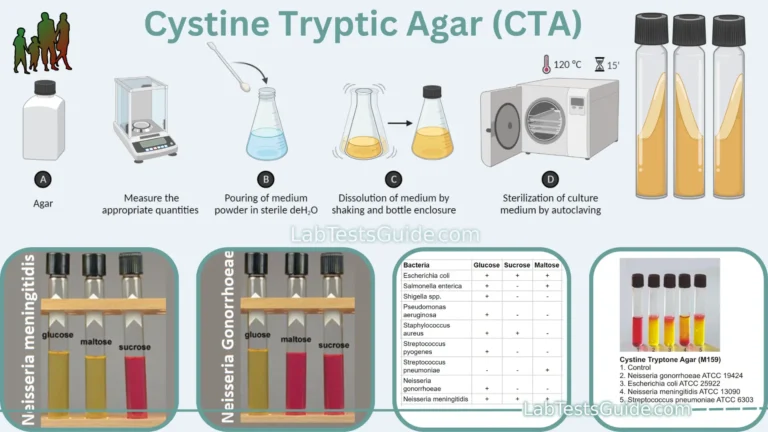Ammonium chloride (NH₄Cl) can be a convenient source of ammonia gas (NH₃) in laboratory settings. When heated or treated with a strong base, it decomposes to release ammonia gas. This property makes it useful in various applications such as synthesis reactions, pH adjustments, or as a reducing agent.

Uses of 0.87% Ammonium Chloride:
- Cough Syrups and Expectorants: Thins mucus to aid in expelling it from the respiratory tract.
- Acid-Base Balance: Helps correct metabolic alkalosis by providing chloride ions.
- Buffer Solutions: Maintains stable pH in biochemical and chemical reactions.
- Cell Culture Media: Maintains osmolarity and provides a nitrogen source.
- Qualitative Analysis: Detects and precipitates certain ions in inorganic analysis.
- Flux in Metal Processing: Cleans metal surfaces and prevents oxidation.
- Dyeing and Tanning: Used in textile dyeing and printing, and in leather tanning.
- Fertilizers: Provides a nitrogen source in agricultural fertilizers.
- Cleaning Products: Acts as a disinfectant in household cleaning products.
- Food Additive: Improves dough strength in bread-making and used in some licorice recipes.
Composition of 0.87% Ammonium Chloride:
| Component | Amount |
|---|---|
| Ammonium chloride | 8.7 grams |
| Distilled water | 1 litre (1000 ml) |
Preparation of 0.87% Ammonium Chloride:
Materials Needed:
- Ammonium chloride (NH₄Cl)
- Distilled water
- Weighing balance
- 1-liter capacity container (marked to hold 1 liter)
- Stirring rod or magnetic stirrer
- Personal protective equipment (gloves, goggles)
Procedure:
- Weighing the Chemical:
- Weigh 8.7 grams of ammonium chloride using a precise weighing balance.
- Transfer the weighed ammonium chloride to a 1-liter capacity container, which is previously marked to hold 1 liter.
- Dissolving the Chemical:
- Add about half the volume of distilled water (approximately 500 mL) to the container.
- Mix the solution using a stirring rod or magnetic stirrer until the ammonium chloride is completely dissolved.
- Making up to Volume:
- After the ammonium chloride is dissolved, add distilled water to the container until the total volume reaches the 1-liter mark.
- Mix thoroughly to ensure a homogeneous solution.
- Labeling and Storage:
- Label the bottle with the name of the solution (0.87% Ammonium Chloride), the date of preparation, and any safety warnings.
- Store the solution at room temperature.
- Renew the reagent if it becomes cloudy.
By following these steps, you will have a properly prepared 0.87% ammonium chloride solution ready for use in various applications.
Precautions:
Precautions for Preparing 0.87% Ammonium Chloride Solution
- Wear Personal Protective Equipment (PPE):
- Use gloves, goggles, and a lab coat to protect your skin, eyes, and clothing.
- Avoid Ingestion and Inhalation:
- Do not ingest or inhale ammonium chloride. Work in a well-ventilated area or use a fume hood.
- Handle Chemicals Carefully:
- Ammonium chloride is harmful. Handle it with care and avoid direct contact.
- Proper Labeling:
- Clearly label the solution with its name, concentration, date of preparation, and safety warnings.
- Storage:
- Store the solution in a properly labeled, airtight container at room temperature.
- Renew if Cloudy:
- If the solution becomes cloudy, discard it and prepare a fresh batch.
- Emergency Procedures:
- Be aware of emergency procedures in case of accidental exposure or spills. Keep a safety shower and eye wash station accessible.
Uses of 0.87% Ammonium Chloride in Clinical Laboratories:
- Buffer Solutions: Used in the preparation of buffer solutions to maintain a stable pH for various biochemical and clinical assays.
- Reagent in Qualitative Analysis: Employed as a reagent to detect and precipitate certain ions during qualitative inorganic analysis.
- Cell Culture Media: Maintains osmolarity and provides a nitrogen source for cell culture media used in research and diagnostics.
- Electrolyte Solutions: Helps in the formulation of electrolyte solutions for various laboratory tests and procedures.
- pH Adjustment: Used to adjust the pH of solutions in various analytical and diagnostic procedures.
- Protein Precipitation: Aids in the precipitation of proteins in biological samples for further analysis.
- Ammonia Release: Serves as a source of ammonia gas for specific analytical techniques and reactions.
- Metabolic Studies: Used in studies related to metabolic processes and electrolyte balance in clinical research.
Possible References Used






